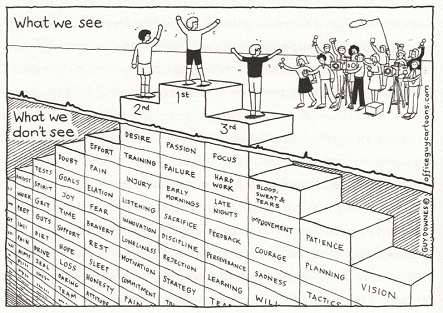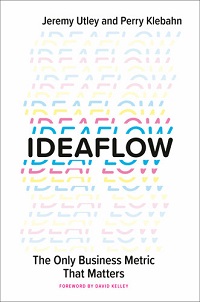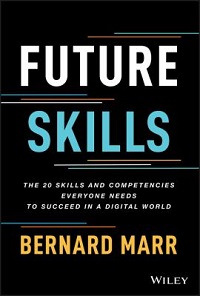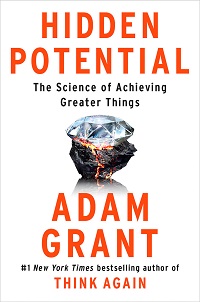Does buying a book for only one chapter seem wasteful?

It is now the 20th June that I have suggested several business books for summer reading. I feel a tad guilty this year, because I haven't fully read the books I'm recommending to you. You're probably wondering...how can Todd recommend books without having read them?
Actually, I have read the parts of the books that I really wanted and needed to read – typically, one or two chapters.
I've previously written about how I "read" a business book The idea is to get as much ROI (Return On Investment) out of the book as you can, while spending as little time reading as possible.
This year, I've taken the idea one step further – rather than spend time choosing books with multiple good sections, I instead chose books to help me answer a question that interested me. I didn't care if the answer I wanted was covered in only one or two chapters – to me, that was a bonus, because it minimized the time I spent finding what I wanted.
The 6 Types of Working Genius: A Better Way to Understand Your Gifts, Your Frustrations, and Your Team, by Patrick Lencioni (2022)
Todd's Question – “What the heck is 'Working Genius' and how can this help me and my team?”
Both the book's title and author caught my attention when I saw it on the shelf at my local Barnes & Noble. I've read several of Patrick Lencioni's books – including The Five Dysfunctions of a Team, Getting Naked, and Silos, Politics, and Turf Wars – and I like both his writing and his content.
This book has the same two-part format as the others I listed – “The Fable” introduces the book's concepts through a realistic business story, while “Exploring the Model” provides the nuts-and-bolts explanation of the book's topic.
Typically, the second part is 20% to 25% the length of “The Fable,” so I jumped straight into “Exploring the Model.”
The six types of Working Genius are:
- Wonder – Being able to ponder and question the state of things, asking questions that provoke answers and action.
- Invention – Coming up with new ideas and solutions.
- Discernment – Using instinct, intuition, and judgment to assess an idea or situation, with little data or outside their area of expertise.
- Galvanizing – Rallying, motivating, and provoking people to take action around an idea or initiative.
- Enablement – Providing people with support and assistance in the way that it is needed.
- Tenacity – Achieving satisfaction by pushing things across the finish line.
These six types are then broken into two groups:
- Responsive – Responds to an external stimulus to be put into action.
- Disruptive – Initiates or provokes change when they see a need, even if others aren't calling for change.
Visually, these six types and two groups are:

As the author accurately says, “What sets the Six Types of Working Genius apart from other tools is its application to the specific activities involved in any kind of group work. As such, it is extremely actionable for people who lead teams, projects, and organizations.” (p 193)
The three stages of work are:
- Ideation – Identifying needs and proposing solutions.
- Activation – Evaluating the merits of the ideas or solutions proposed during Ideation, then rallying people around the ideas or solutions worthy of actions.
- Implementation – Getting the ideas or solutions generated by Activation done, whether by answering a call to action or pushing action through to the final stages of completion.
Here's a diagram of the six types and three stages of work:

Bottom Line – I found this model to be extremely helpful in better assessing the “Working Genius” of associates and client personnel, and in seeing how an “Activation” stage of work is a necessary interlude between “Ideation” and “Implementation.”
Hidden Potential: The Science of Achieving Greater Things, by Adam Grant (2023)
Todd's Question – “How do I more consistently find 'Diamonds in the Rough'?”
Every business has employee turnover, and mine is no exception. Over the years, I've found several “Diamonds in the Rough.” How did I find these?
- Interesting Hobbies – When I'm reviewing candidate resumes, I look to see if they have included their hobbies. For three folks I ended up hiring and who performed well, their hobbies were:
- Building liquid-cooled gaming computers.
- Building a server with lots of disk space, hooking it up to a cable modem in the bedroom closet, and charging small businesses a monthly fee to back up their data offsite.
- Restoring cars and playing in a band.
- General Intelligence, Good Work Ethic, and Willing to Learn – I'm a firm believer that, for most jobs, an intelligent person with a good work ethic who is willing to learn on the job can do as well as, or better than, a person who – based on their education – seems to be a better fit. Give me a liberal arts major who's teachable and willing to get their hands dirty, and I'll hire them over someone with a STEM degree from a “better” school!
- Personal Knowledge – My two best associates ever? A friend of mine from church, and the daughter of friends from church! With such people, there's already a sense of familiarity and I knew both were smart, hard-working, and reliable people.
A few recent hires were not diamonds waiting to be discovered, so I was VERY interested in Chapter 9, “Diamonds in the Rough: Discovering Uncut Gems in Job Interviews and College Admissions.” Here are some key ideas I marked in this chapter:
- Experience vs Potential – “A candidate with 20 years of experience on a resume may have just repeated the same year of experience 20 times. So, you need experience to get a job, but you need a job to get experience ... and that experience reveals little about your potential. The key question is not how long people have done a job. It's how well they can learn to do a job.” (p 204)
- Heart and Mind – When Tom Brady “entered the NFL, he wasn't drafted until the 199th pick. Based on his performance in college and in the draft combine, scouts had serious doubts about whether Brady's arm was strong enough to zip a spiral and hurl a Hail Mary. It was unlikely that he would be fast enough to escape a blitz. The problem is that scouts were focusing on Brady's body, not his mind ... nerves of steel ... and heart.” (p 206)
- Adjusting Expectations for Access to Opportunity – “Accounting for their individual degree of difficulty points to a more helpful solution: adjusting skill expectations by access to opportunity. ... The goal of measuring degree of difficulty at the individual level isn't to advantage people who face adversity. It's to make sure we don't disadvantage people for navigating adversity.” (p 210)
- Overcoming Obstacles – “We need a way to assess the distance people have traveled to overcome the unique obstacles on their path.” (p 212)

- Grade Point Trajectory – “It's time for universities and employers to add another metric. Along with GPA, I think they should be assessing GPT: Grade Point Trajectory. They can calculate the rate of improvement over time with basic division: rise over run. Early failure followed by later success is a mark of hidden potential.” (p 214)
Throughout this chapter, the author illustrates these and other points by using the life story of Jose' Hernandez – a son of migrant farmers with a burning desire to become an astronaut. Throughout his life, Jose' successfully overcame many obstacles – including numerous rejections by NASA – to eventually board the Space Shuttle and journey to space in August 2009.
Bottom Line – The ideas in the five bullet points I listed are, to me, worth the price of the book. I believe we already do a good job on the first one, because we run candidates through an “audition” of basic tasks tailored to the position. For the other four, we can adjust our interview questions, reference checks, and transcript reviews to better mine for uncut gems.
Ideaflow: The Only Business Metric That Matters, by Jeremy Utley and Perry Klebahn (2022)
Todd's Question – “What is 'Ideaflow' and how can it be quantified?”
The book's authors and the author of the Foreword are all founders or directors of Stanford University's Hasso Plattner Institute of Design – more commonly referred to as “the d.school” – so they know how to consistently be creative, and how to help others develop their creativity by increasing their volume of ideas.
This book starts strong, because I found the answers to my questions in the book's Foreword, Introduction, and first chapter! Here are the key points answering my question:
- Quantity Begets Quality – “One of the biggest surprises for new students at the d.school – whether they are head of a major company or were head of their high school class – is the idea that quantity creates quality. ... What we tell them from the get-go is to ignore good and bad in the early rounds, and shoot for lots of ideas instead. To go for volume before judgment around quality can set it.” (p xiii)
- Who Needs Ideas? – “I don't need breakthrough results in my company, my work, or my life. – NO ONE (EVER)” (p xv) This tongue-in-cheek opening quote means...EVERYONE needs MORE and BETTER ideas.
- What is Creativity? – “The best definition we've heard comes from a seventh-grader in Ohio, whose teacher recently shared it with a friend of ours: 'Creativity is doing more than the first thing that comes to your mind.' In other words, it's the capacity to keep generating ideas after the first one that's 'good enough'.” (p xv) The quote has probably locked in admission to the d.school for that kid!
- Ideas Don't Just Happen – “You can't consciously choose to make an idea. (Try it, you'll see.) Instead, ideas start arriving once you've identified a clear problem and gathered sufficient raw material for the brain to do its job” of making new connections between things you already know. (p xvi)
- Creativity = Problem Solving – “Creativity is the craft of problem solving. Painting and poetry call on it, but so do mergers and acquisitions. ... We find it helpful to think of it this way: If you already knew how to solve a problem, it wouldn't be a problem at all.” (p xxi)
- Problems Only Respond to Ideas – “A true problem responds to only one thing: ideas. From this perspective, every problem is an idea problem.” (p xxii)
- Ideaflow – “The most useful measure of creativity we've found is as follows: the number of novel ideas a person or group can generate around a given problem in a given amount of time. We call this metric ideaflow. ... While the proper execution of ideas is crucial, ideaflow is the foundation, the essential force that drives all future success.” (p 9)
- Measuring Ideaflow – This is a simple metric, where Number of Ideas / Amount of Time = Ideaflow.
- Number of Ideas – Use a simple prompt to generate ideas, such as the number of different Subject Lines you can write down for a reply to a client's email, or the number of Ad Slogans you can jot down. (p 14)
- Amount of Time – Write down your ideas for a short amount of time, such as 2, 5, or 10 minutes. (p 14)
- Take the Same Measurement Regularly – Compare your current score to previous and future ones to gauge the “relative health of your creative engine or that of a team.” (p 13)
- Interpreting Ideaflow – “What ideaflow isn't is a measure of intelligence or talent. Instead, you might say it assesses your state of mind. Rapidly generating divergent possibilities requires you to suspend self-consciousness. To operate without fear of failure or embarrassment.” (p 15)
While I've heard a few of these points before – for example, the “Quantity Creates Quality” principle is the basis of the “Morning Pages” exercises in The Artist's Way: A Spiritual Path to Higher Creativity, by Julia Cameron, and other items broadly tie into the “inherently optimistic way of looking at what's possible” principle underlying the wonderful book Creative Confidence: Unleashing the Creative Potential Within Us All, by Tom Kelley and David Kelley – the synthesis and expansion by these authors is invaluable.
Bottom Line – This book provides the concepts and processes needed to ramp up the quantity and quality of your ideas.
Future Skills: The 20 Skills and Competencies Everyone Needs to Succeed in a Digital World, by Bernard Marr (2022)
Todd's Question – “What skills do my associates and I need to stay relevant?”
As I wrote in last year's book reviews, Short on Time, I value well-organized books I can pull off my bookcase and quickly find an answer to a specific question. As the subtitle states, this book's chapters focus on skills and competencies that cannot be automated. The book is organized like a handbook and each chapter is well-structured to help you quickly find the key points for a particular skill or competency. The 20 skills and competencies are:
- Digital Literacy – Using digital devices, software, and applications to communicate, collaborate, and coordinate with others to get things done.
- Data Literacy – Accessing and working with data to find meaning in the numbers, and communicating your insights to others.
- Technical Skills – Staying abreast of the "hard" practical skills needed to do your job successfully.
- Digital Threat Awareness – Being aware of the dangers of being online or using digital devices, and having and using the tools to keep yourself and your organization safe.
- Critical Thinking – Using various techniques to observe a situation or identify a problem, then think objectively about implications of and possible solutions to these.
- Judgment and Complex Decision-Making – Using information you've assessed as reliable to make a decision that both practically addresses the issue and aligns with your values.
- Emotional Intelligence and Empathy – Being aware of your emotional state and appropriately expressing your emotions, while also understanding and responding to the emotions and situations of others.
- Creativity – Thinking of imaginative ideas, then turning them into reality.
- Collaboration and Working in Teams – Working with others to think together, making decisions together, and share responsibilities.
- Interpersonal Communication – Exchanging information, emotions, and meaning with others, sharing your experiences through oral, written, and nonverbal means, while also understanding the experiences of others via active listening.
- Working in Gigs – Performing work through short– term contracts or freelance work, in lieu of – or in addition to – regular employment.
- Adaptability and Flexibility – Being able, and willing, to adjust to new conditions – that is, have both the aptitude and attitude required to change.
- Cultural Intelligence and Diversity Consciousness – Bringing your curiosity, open– mindedness, empathy, emotional intelligence, and communication skills to the many ways in which people can differ, in both your personal and professional lives.
- Ethical Awareness – Considering how your actions align with your sense of right and wrong, and with whether they might help or hurt individuals, organizations, society, or our planet.
- Leadership Skills – Helping others grow while getting things done, through motivation, recognizing and fostering potential, inspiring trust, and similar qualities.
- Brand of “You” and Networking – Thinking about what you want others to think about you, then taking the steps necessary – both physically and online – to demonstrate these qualities to others.
- Time Management – Applying and honing various techniques to use your time efficiently and effectively.
- Curiosity and Continual Learning – Wanting to understand new things, then finding and taking appropriate learning opportunities to do this.
- Embracing and Celebrating Change – Learning to manage changes that affect others, while also navigating changes that affect you.
- Looking After Yourself – Being able to stay on top of your workload, while still spending time with family and friends, and keeping yourself in good physical and emotional shape.
Learning the key points about just one of these topics justifies buying this book.
Bottom Line – I've already used this book to help me get up to speed on several of these concepts.
Ten Years of Experience – Two Different Paths
A Controller at a long-ago client once told me, “Todd, there's a big difference between 10 years of my work and 10 years of your work." “What do you mean, Duane?” “Well, I've had the same experience 120 times, while you always have a different experience with each client project.”
Duane was right. My career has been filled with many different experiences. To make sure I can continue doing this work I love, I always need to find good associates, ensure we all develop the skills needed for the future, generate new ideas, and turn these ideas into reality – and these four books have earned a spot on my bookcase to help me do all this.
Sincerely,
![]()
Todd L. Herman







